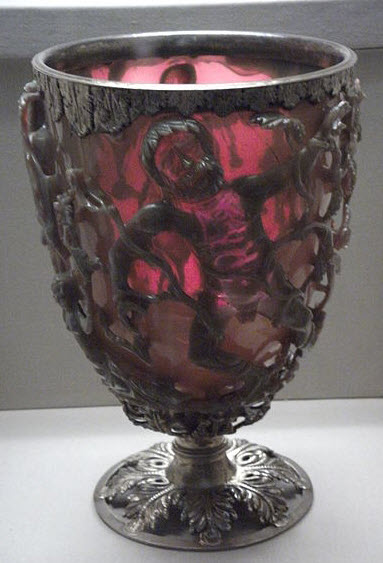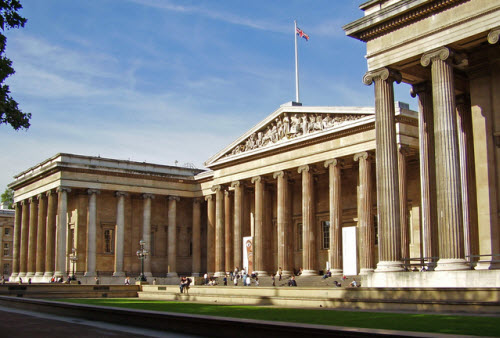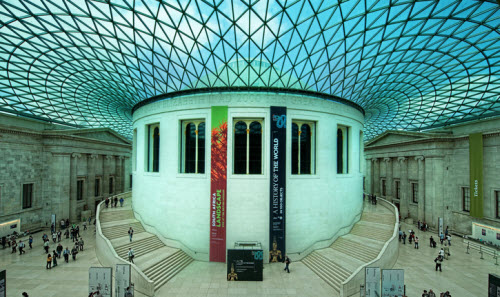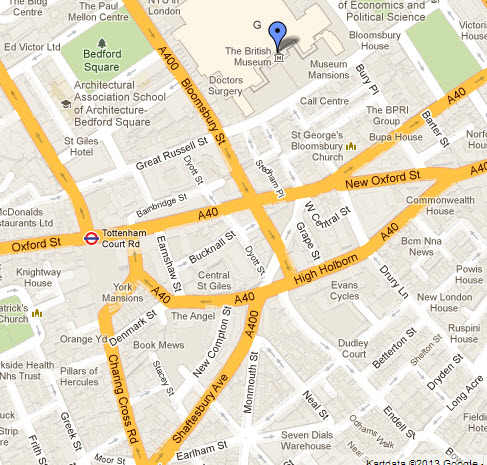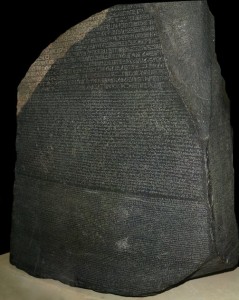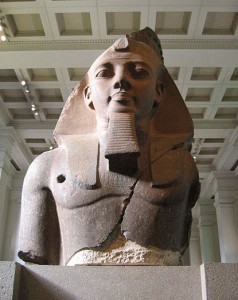The British Museum is the chronicle of the western civilization.
~Rick Steves (London 2013)
From Wikipedia
The British Museum is a museum in London dedicated to human history and culture. Its permanent collection, numbering some eight million works, is among the largest and most comprehensive in existence and originates from all continents, illustrating and documenting the story of human culture from its beginnings to the present.
The British Museum was established in 1753, largely based on the collections of the physician and scientist Sir Hans Sloane. The museum first opened to the public on 15 January 1759 in Montagu House in Bloomsbury, on the site of the current museum building. Its expansion over the following two and a half centuries was largely a result of an expanding British colonial footprint and has resulted in the creation of several branch institutions, the first being the British Museum (Natural History) in South Kensington in 1887. Some objects in the collection, most notably the Elgin Marbles from theParthenon, are the objects of intense controversy and of calls for restitution to their countries of origin.
Until 1997, when the British Library (previously centred on the Round Reading Room) moved to a new site, the British Museum was unique in that it housed both a national museum of antiquities and a national library in the same building. The museum is a non-departmental public body sponsored by the Department for Culture, Media and Sport, and as with all other national museums in the United Kingdom it charges no admission fee, except for loan exhibitions. Since 2002 the director of the museum has been Neil MacGregor.
Location
Address: Great Russell Street, London WC1, England, UK
The British Museum is the only place I can think of where you can follow the rise and fall of three great civilizations – Egypt, Assyria & Greece.
~Rick Steves (London 2013)
Highlights – Department of Ancient Egypt and Sudan
The British Museum houses the world’s largest and most comprehensive collection of Egyptian antiquities, over 100,000 pieces, outside the Egyptian Museum in Cairo. A collection of immense importance for its range and quality, it includes objects of all periods from virtually every site of importance in Egypt and the Sudan. Together they illustrate every aspect of the cultures of the Nile Valley (includingNubia), from the Predynastic Neolithic period (c. 10,000 BC) through to the Coptic (Christian) times (12th century AD), a time-span over 11,000 years.
- The Rosetta Stone (196 B.C.)
The Rosetta Stone is an ancient Egyptian granodiorite stele inscribed with a decree issued at Memphis in 196 BC on behalf of King Ptolemy V. The decree appears in three scripts: the upper text is Ancient Egyptian hieroglyphs, the middle portion Demotic script, and the lowest Ancient Greek. Because it presents essentially the same text in all three scripts (with some minor differences between them), it provided the key to the modern understanding of Egyptian hieroglyphs.
- Younger Memnon (ca 1270 B.C.)
The Younger Memnon statue is one of two colossal granite heads from the Ancient Egyptian mortuary temple called the Ramesseum at Thebes, depicting the pharaoh Ramesses II wearing the nemes head-dress with a cobra diadem on top. This incomplete statue has lost its body and lower legs; it is one of a pair which originally flanked the doorway of the Ramesseum. The head of its pair is still at the Ramesseum.Material Granite Size H: 267 cm (105 in)
W: 203 cm (80 in)Created 1270BC (circa) Period/culture 19th Dynasty Place Ramesseum, Doorway Present location Room 4, British Museum,
London - Gebelein predynastic mummies (~3400 B.C.)
… six naturally mummified bodies, dating to approximately 3400 BC from the Late Predynastic period of Egypt, and were the first complete pre-dynastic bodies to be discovered. The well-preserved bodies were excavated at the end of the nineteenth century by Wallis Budge, the British Museum Keeper for Egyptology, from shallow sand graves near Gebelein (modern name Naga el-Gherira) in the Egyptian desert.
From 1901 the first body excavated has remained on display in the British Museum. This body was originally nicknamed ‘Ginger‘ due to his red hair; this nickname is no longer officially used as part of recent ethical policies for human remains.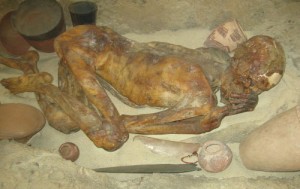
- Colossal red granite statue of Amenhotep III (1370 B.C.)
The 18th Dynasty Ancient Egyptian colossal red granite statue of Amenhotep III, dating from c.1370 BC was found in the temple enclosure of Mut at Karnak in Egypt. Two parts of the broken colossal statue are known: the head and an arm. Both parts are now in the British Museum.
- Gayer-Anderson cat
.. an Ancient Egyptian statue of a cat made out of bronze, from the Late Period, about 664-332 BC.
The sculpture is now known as the Gayer-Anderson cat after Major Robert Grenville Gayer-Anderson who, together with Mary Stout Shaw, donated it to the British Museum. The statue is a representation of the cat-goddess Bastet. The cat wears jewellery and a protective wedjat amulet. The earrings and nose ring on the statue may not have always belonged to the cat. A winged scarab appears on the chest and head, it is 42cm high and 13cm wide. A copy of the statue is kept in the Gayer-Anderson Museum, located in Cairo.
Highlights – Department of Greece and Rome
The British Museum has one of the world’s largest and most comprehensive collections of antiquities from the Classical world, with over 100,000 objects. These mostly range in date from the beginning of the Greek Bronze Age (about 3200 BC) to the reign of the Roman Emperor Constantine I in the 4th century AD.
The Cycladic, Minoan and Mycenaean cultures are represented, and the Greek collection includes important sculpture from the Parthenon inAthens, as well as elements of two of the Seven Wonders of the Ancient World, the Mausoleum at Halicarnassus and the Temple of Artemisat Ephesos.
- The Elgin Marbles (circa 447–438 BCE)
..a collection of classical Greek marble sculptures (mostly by Phidias and his assistants), inscriptions and architectural members that originally were part of the Parthenon and other buildings on the Acropolis of Athens. Thomas Bruce, the 7th Earl of Elgin obtained a controversial permit from the Ottoman authorities to remove pieces from the Parthenon while serving as the British ambassador to the Ottoman Empire from 1799 to 1803.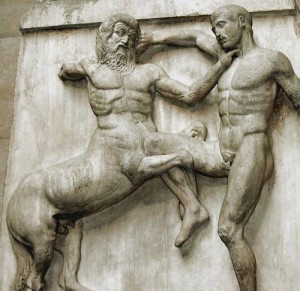
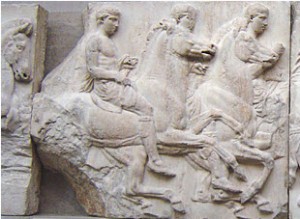
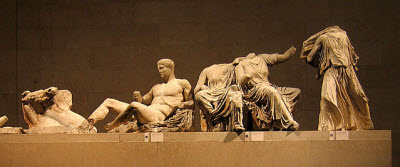 –
– - A Fragmentary horse from a colossal four-horses chariot group which topped the podium of the Mausoleum at Halicarnassus.
 From: Bodrum, modern TurkeyDate: about 350 BCOne of the most magnificent tombs ever built belonged to Mausollos, ruler of Caria, in what is now south west Turkey. The tomb was over 40 metres high and so richly decorated that it became known as one of the Seven Wonders of the World.Although Mausolus was not actually Greek, he employed the very best Greek sculptors to make carvings for the tomb. At the very top was a chariot pulled by four huge marble horses. This is what remains of one of the horses. They stood about 4 metres tall and had shiny bridles and reins made of bronze – you can see that this horse still has its bridle. Nobody knows what was in the chariot – it might have been a statue of Mausollos or of the sun god Apollo (or Helios) or the chariot might have been left empty as an offering to the dead king.
From: Bodrum, modern TurkeyDate: about 350 BCOne of the most magnificent tombs ever built belonged to Mausollos, ruler of Caria, in what is now south west Turkey. The tomb was over 40 metres high and so richly decorated that it became known as one of the Seven Wonders of the World.Although Mausolus was not actually Greek, he employed the very best Greek sculptors to make carvings for the tomb. At the very top was a chariot pulled by four huge marble horses. This is what remains of one of the horses. They stood about 4 metres tall and had shiny bridles and reins made of bronze – you can see that this horse still has its bridle. Nobody knows what was in the chariot – it might have been a statue of Mausollos or of the sun god Apollo (or Helios) or the chariot might have been left empty as an offering to the dead king.
Department of the Middle East
Formerly the Department of the Ancient Near East, with a collection numbering some 330,000 works, the British Museum possesses by far the world’s largest and most important collection of Mesopotamian antiquities outside Iraq. A collection of immense importance, the holdings of Assyrian, Babylonian and Sumerian antiquities are among the most comprehensive in the world with entire suites of rooms panelled in alabaster bas-reliefs from highly important sites between the rivers Euphrates and Tigris and include the biblical cities of Nimrud, Nineveh and Khorsabad.
- Pair of Human Headed Winged Lions and Reliefs from Nimrud with The Gates of Balawat
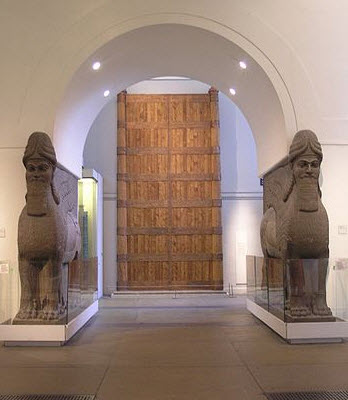 Large stone sculptures and reliefs were a striking feature of the palaces and temples of ancient Assyria (modern northern Iraq). An entrance to the royal palace of King Ashurnasirpal II (883-859 BC) at Nimrud was flanked by two colossal winged human-headed lions. A gigantic standing lion stood at the entrance to the nearby Temple of Ishtar, the goddess of war.
Large stone sculptures and reliefs were a striking feature of the palaces and temples of ancient Assyria (modern northern Iraq). An entrance to the royal palace of King Ashurnasirpal II (883-859 BC) at Nimrud was flanked by two colossal winged human-headed lions. A gigantic standing lion stood at the entrance to the nearby Temple of Ishtar, the goddess of war. - Lion hunts (Room 10a)
645 – 635 BC
In ancient Assyria, lion-hunting was considered the sport of kings, symbolic of the ruling monarch’s duty to protect and fight for his people. The sculpted reliefs in Room 10a illustrate the sporting exploits of the last great Assyrian king, Ashurbanipal (668-631 BC) and were created for his palace at Nineveh (in modern-day northern Iraq).
The hunt scenes, full of tension and realism, rank among the finest achievements of Assyrian Art. They depict the release of the lions, the ensuing chase and subsequent killing.
The mood of tragedy, dignity, and proud struggle in a hopeless cause makes this dying lioness simply one of the most beautiful of human creations
~Rick Steves
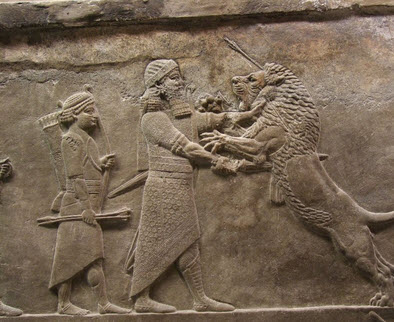
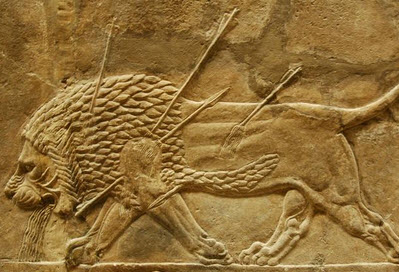
Other
- The Portland Vase
Portland Vase is a Roman cameo glass vase, currently dated to between AD 5 and AD 25, which served as an inspiration to many glass and porcelain makers from about the beginning of the 18th century onwards. Since 1810 the vase has been kept almost continuously in the British Museum in London. It was bought by the museum in 1945 (reference – GR 1945,0927.1) ; on display in Room 70, Rome: City & Empire).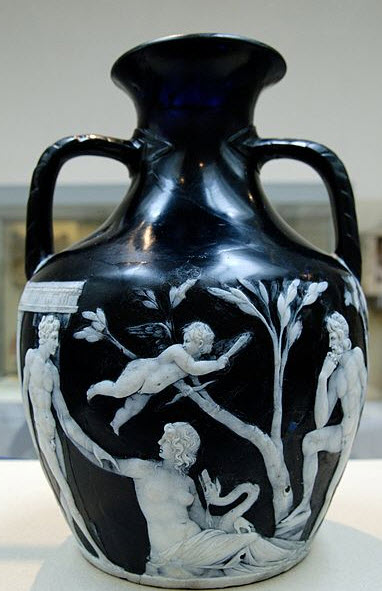
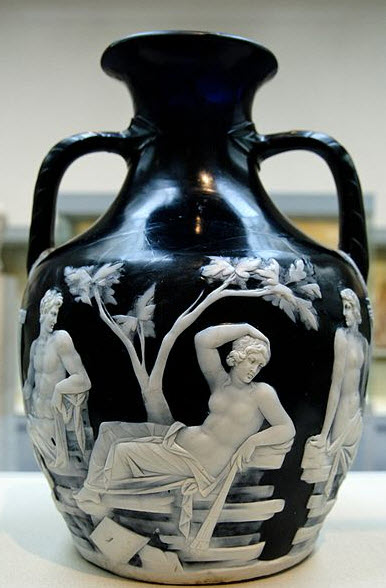
- Lycurgus Cup (4th C A.D.)
The Lycurgus Cup is a Roman glass cage cup now in the British Museum, but until August 2013 on loan to the Art Institute of Chicago, made of a dichroic glass, which shows a different colour depending on whether or not light is passing through it; red when lit from behind and green when lit from in front. It is the only complete Roman glass object made from this type of glass, and the one exhibiting the most impressive change in colour; it has been described as “the most spectacular glass of the period, fittingly decorated, which we know to have existed”.